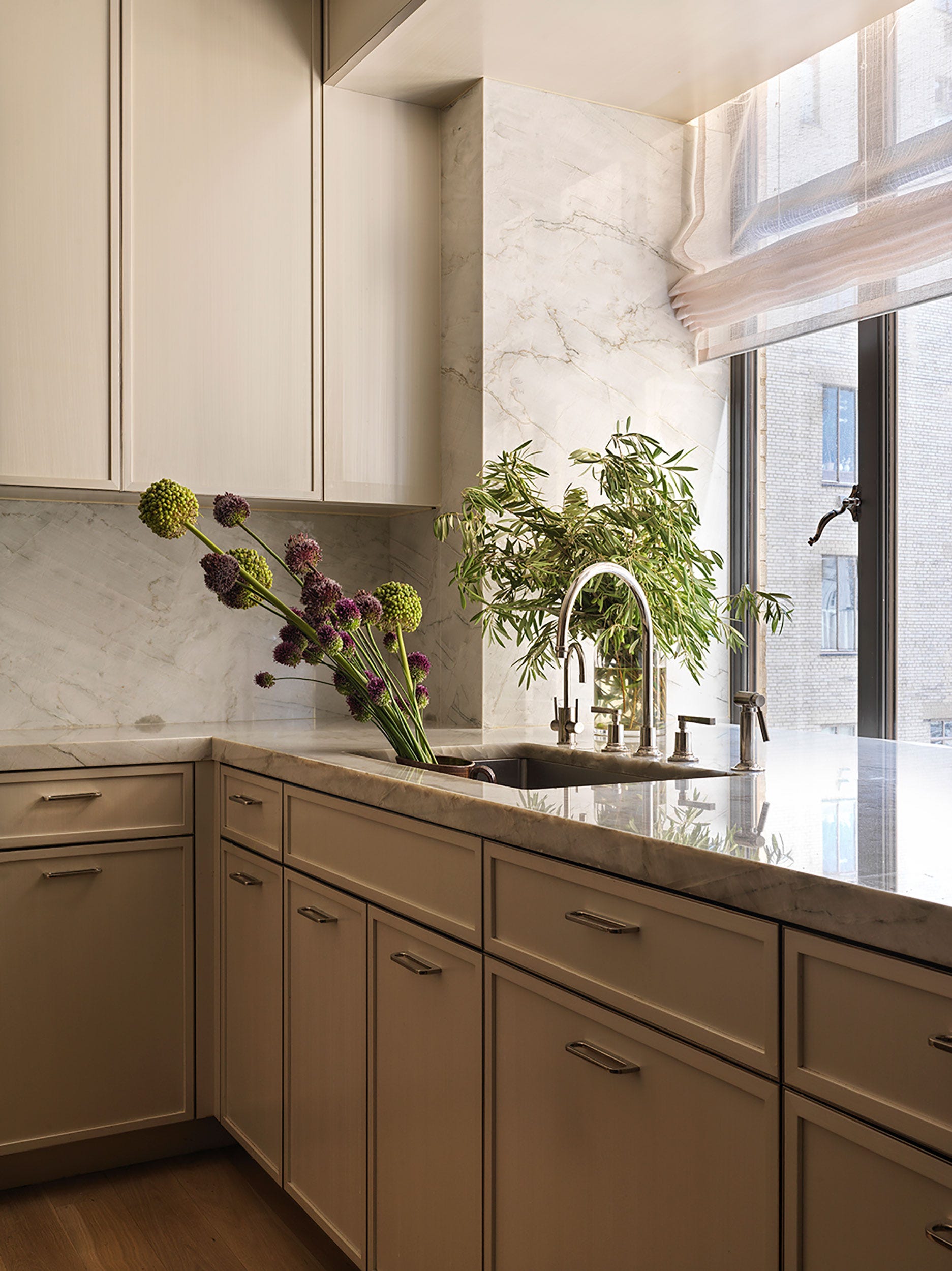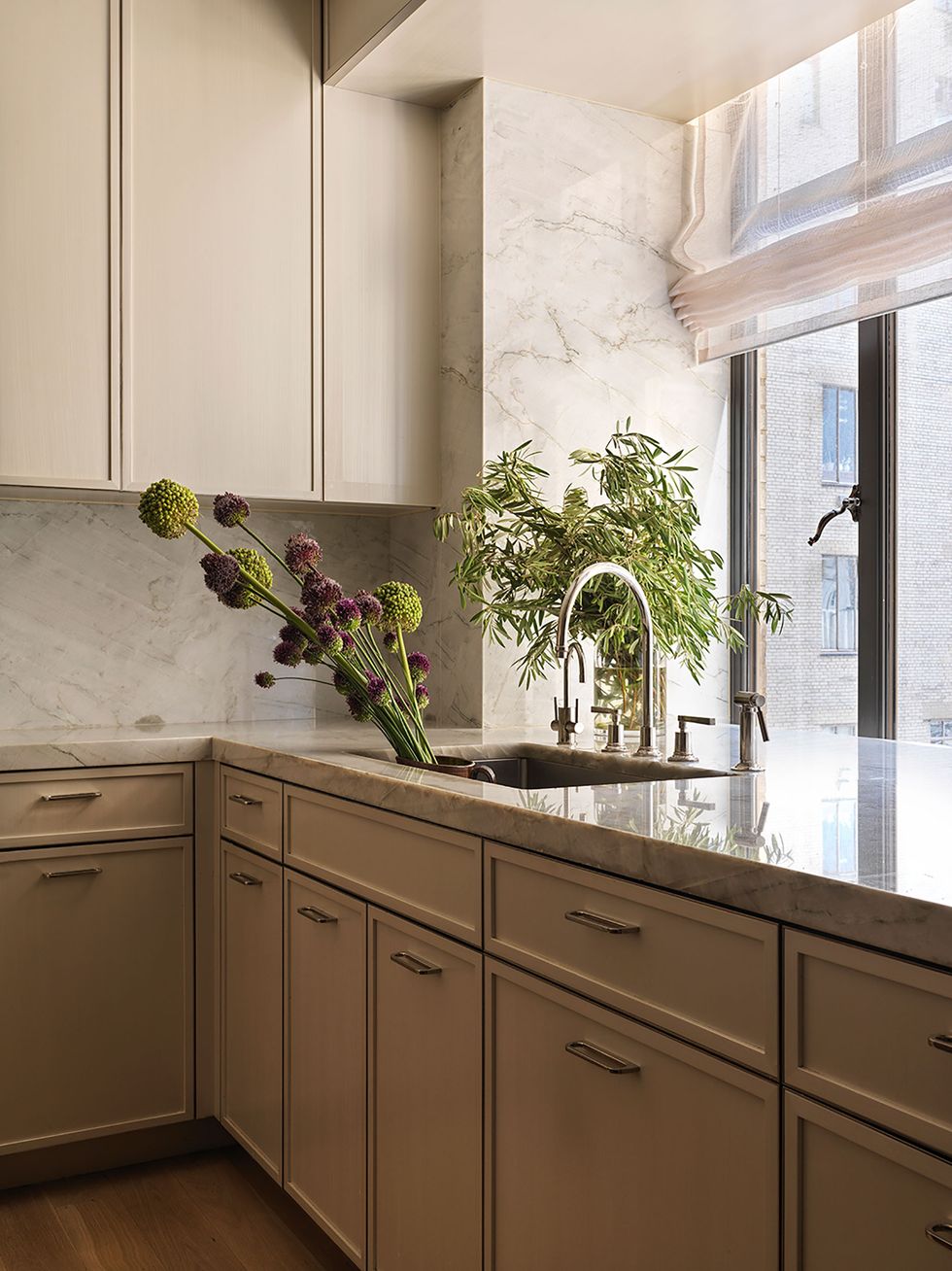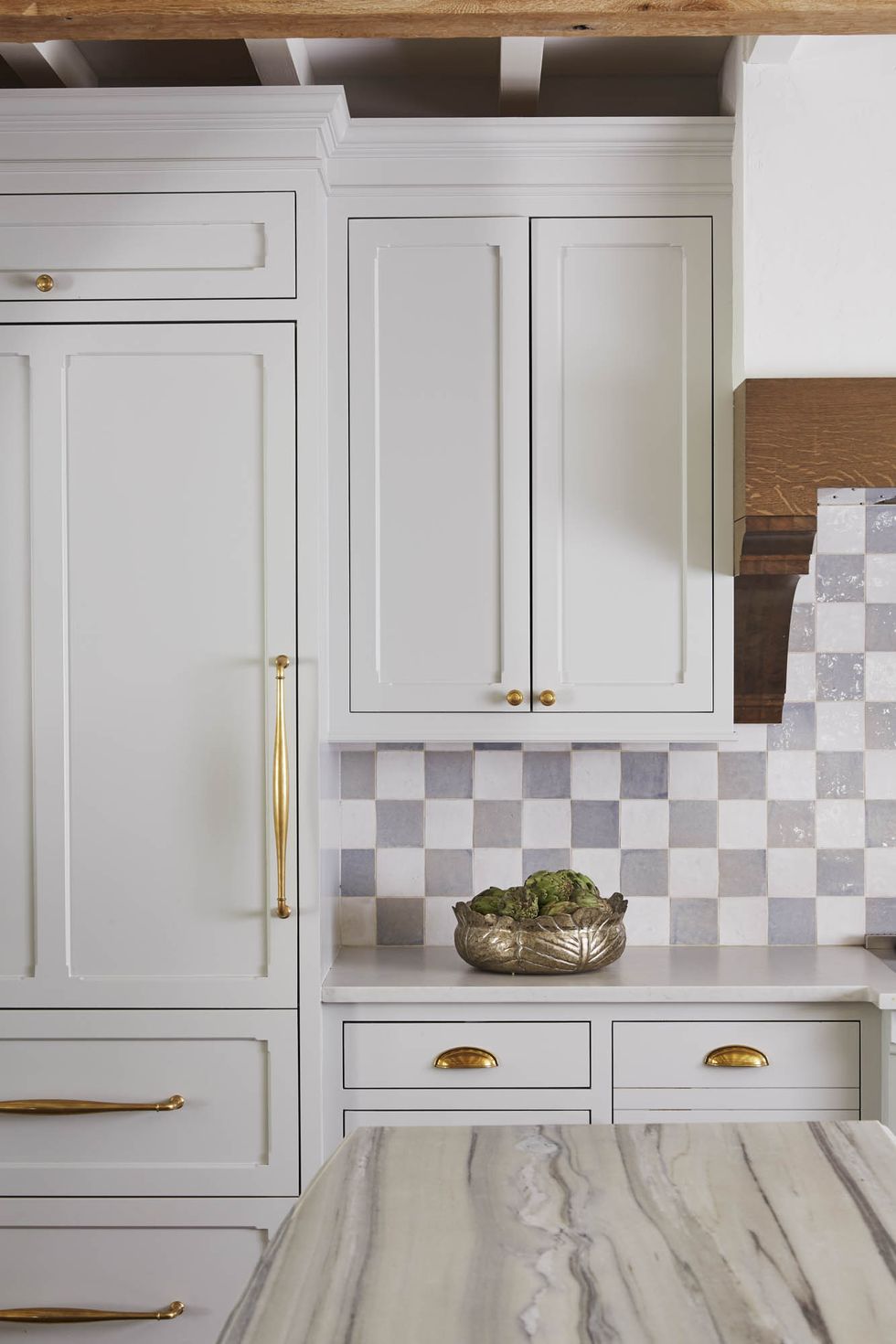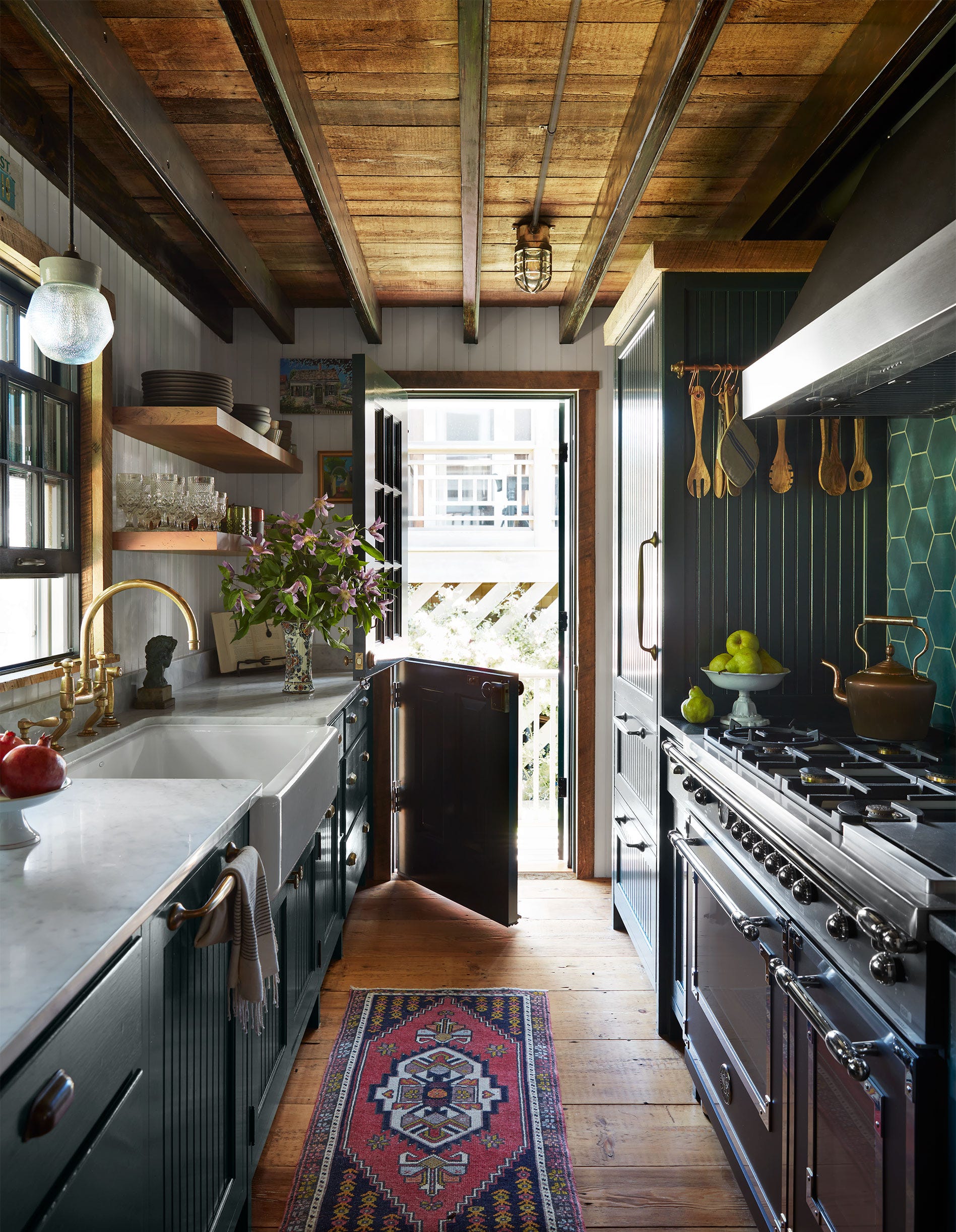Kitchen design is, appropriately, one of the most difficult home decor recipes to perfect. No matter how welcoming your other living spaces feel, the brunt of day-to-day life and gathering happens in the kitchen, alongside the actual cooking. That fact demands a masterful balance between functional and comfortable choices: The surfaces, appliances, and built-in storage that you invest in should stand the test of time, but not feel so trend-avoidant that you’ll get bored of them. A statement color is always at risk of going out of style, but an all-white kitchen can feel too sterile and unforgiving. Finding a tasteful, timeless solution can feel impossible––which is exactly why the warm-glowing, universally inviting “cashmere kitchen” is trending.
The cashmere kitchen is refreshingly self-aware: It’s more of a response to the pitfalls of recent decor trends than a shiny new trend itself. Its warm palette of curated, balanced neutrals ensures that it’s neither too bold nor too beige. With soft lighting, muted brassy fixtures, and a thoughtful layering of earthy textures, cashmere kitchens create a sense of lived-in luxury that says in equal parts: “this is a special space,” and “messy bakers are allowed here.” In this aptly named approach to kitchen design, you’ll find all the qualities you love about your favorite cashmere sweater: a familiar coziness that still feels elevated, a timeless base layer to support trendier pieces, and, most importantly, a soft, inviting warmth that only gets better with time and use.
Below, take a look through some cashmere kitchen inspiration—with notes on the qualities that make them work.
Pick a Paint Color That Gives Off Its Own Glow
Paint selection is a critical first step in designing a cashmere kitchen, and warm sand shades are a reliable choice. The base color in this apartment’s kitchen has almost all the neutral pairing capabilities of a classic white, but it adds a breathable, understated warmth that sets the right tone for layering other cozy design elements.
Make Warmer Hardware Selections
The feeling of cold, steely metal is the antithesis of the cashmere kitchen. Instead, designers opt for warm-toned hardware and fixtures that add to the space’s soft, hazy glow (rather than harsh reflection). Unlacquered brass is a popular choice, especially for a design trend that boasts its longevity: These finishes tend to weather gracefully, and will only look more at home in your cashmere kitchen as they’re worn in.
Take “Soft Lighting” Literally
We flagged fabric light fixtures as a top kitchen design trend in 2025, and what better venue for them than a kitchen that’s inspired by a textile? Designer Hillary Cohen of HCO Interiors noted an uptick in both designer and manufacturer attention to softer, more tactile lighting trends, telling us: “They add some warmth and interest to lighting where glass globes have been predominant for so long.”
Create Tactile Intrigue
Committing to the the cashmere kitchen’s neutral color palate leaves plenty of design space to experiment with textures. In this room, designer Heidi Caillier balanced this neutral look with the 18th century home’s original features. The exposed natural wood making up this kitchen’s support beams, stools, and floor adds a rustic edge, balancing the smooth, subtle paneling and soft brass accents.
Build a Versatile Base
The quintessential cashmere kitchen is perfectly charming on its own, but it can also serve as a blank canvas for bolder design elements. The more permanent qualities of this kitchen have the cashmere treatment—a warm grey paint coating, brass fixtures, and complementary dark and light marble countertops—setting the stage for its statement pieces: the moody portrait, bust, and oversized lighting installation. One of the neutral kitchen’s best qualities is that it can be dressed up with different mobile design elements as tastes and trend cycles evolve. (Because if the ghosts of kitchen renovations past have taught us anything, they will.)
Grace McCarty is a freelance Associate Digital Editor at ELLE Decor, where she covers design trends, shopping, and culture. She previously held a staff position at SELF Magazine, where she focused on beauty, style, and wellness. Her work has also appeared in Glamour and Parade.







